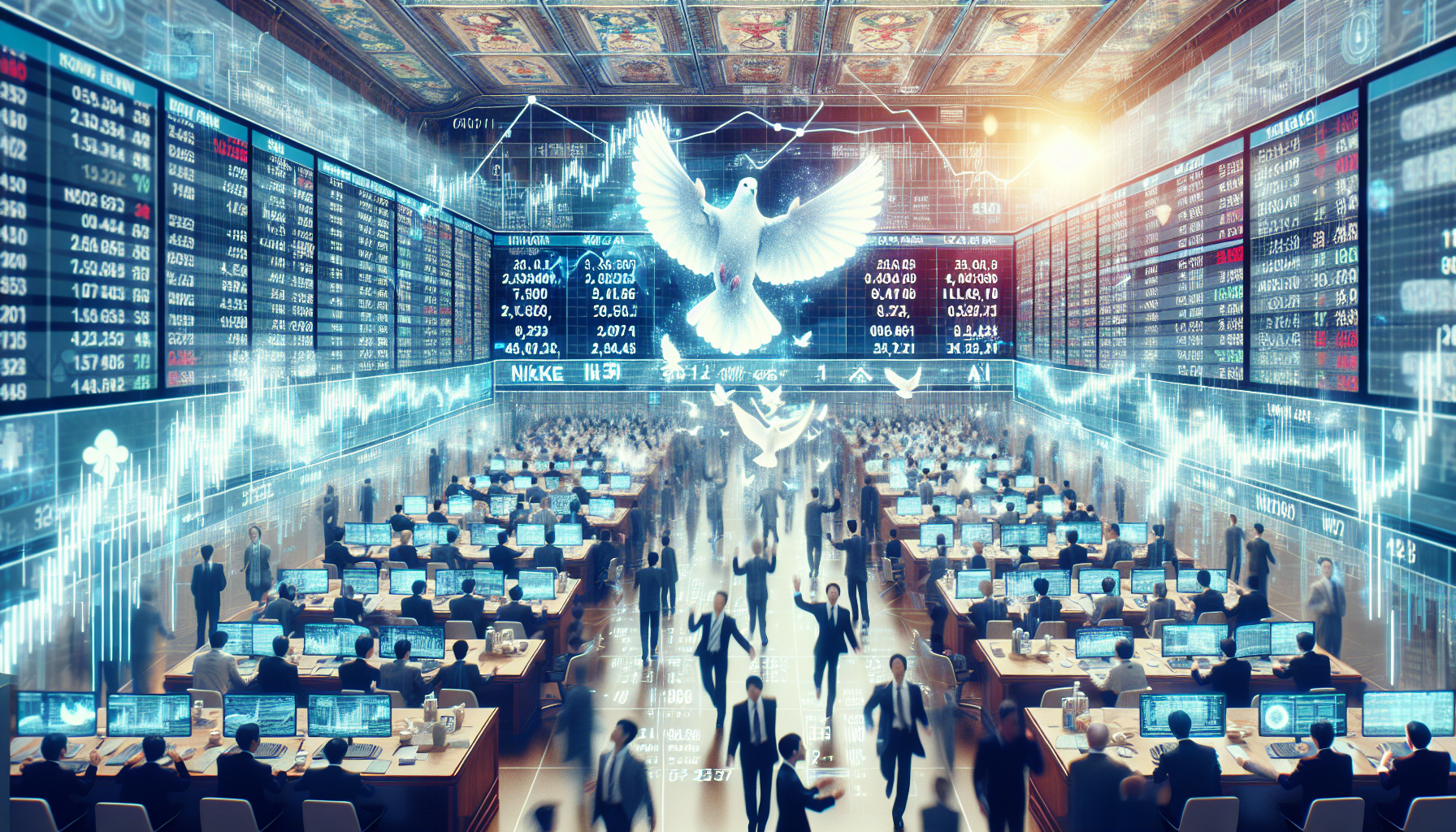A New Dawn for Asia-Pacific Markets: Trade Truce Ignites Record Rally
A palpable sense of relief swept through Asia-Pacific financial centers on Friday, as a temporary de-escalation in the protracted trade conflict between the United States and China injected a powerful dose of optimism into the region's markets. The catalyst was a high-stakes meeting between U.S. President Donald Trump and Chinese President Xi Jinping, which resulted in a tentative truce, particularly concerning the critical dispute over rare earth elements. This development, seen as a crucial step back from the brink of a full-scale trade war, prompted a significant re-evaluation of risk, with capital flowing into equities and propelling several key indices to unprecedented heights.

The Ripple Effect: A Regional Market Surge
The market's reaction was both immediate and decisive. Across the region, bourses painted a largely positive picture, reflecting renewed investor confidence in the global economic outlook. The rally was not uniform, however, highlighting the unique drivers and challenges within each economy. The collective movement nonetheless signaled a robust regional appetite for risk assets in the wake of reduced geopolitical friction.
Japan's Nikkei 225: Scaling Uncharted Peaks
Leading the charge was Japan's benchmark Nikkei 225, which surged over 1% to close at a fresh all-time record. The broader Topix index also climbed 0.79%, cementing a new peak of its own. This historic performance underscores how Japanese equities are benefiting from a weaker yen and the prospect of more stable global supply chains. The truce alleviates fears of immediate, disruptive tariffs on Japanese exports and components, providing a tailwind for the country's export-heavy corporate giants. However, not all news was positive; shares of Panasonic Holdings plummeted over 8% after the company slashed its full-year operating profit forecast, citing weaknesses in its key energy unit that supplies batteries to Tesla. This served as a reminder that idiosyncratic company risks persist even amidst a broad market rally.
South Korea's Tech-Driven Ascent
South Korea's Kospi added 0.22%, hovering near its own recent record, while the Kosdaq, home to many tech startups, gained 0.47%. The standout performer was Hyundai, whose shares skyrocketed 9.6%. This surge was fueled by a landmark announcement from Nvidia, revealing a deepened partnership with the automaker. The collaboration, focused on autonomous vehicles, smart factories, and robotics, will be powered by Nvidia's next-generation Blackwell AI processors. The scale of the initiative is staggering, with plans to deploy 50,000 Blackwell GPUs and approximately $3 billion in AI infrastructure in Korea, positioning the nation as a formidable hub in the global AI arms race.
Mixed Fortunes: Australia's Gain and China's Pain
Australia's S&P/ASX 200 started the day firmly in the green, rising 0.45%, as resource stocks found support in the more stable trade environment. In contrast, Hong Kong's Hang Seng Index bucked the positive trend, sliding 0.33%, and mainland China's CSI 300 was flat. The muted response in Chinese markets can be attributed to sobering domestic economic data released concurrently. China's official manufacturing Purchasing Managers' Index (PMI) for October contracted more than expected, shrinking to 49—its lowest level since May. A figure below 50 indicates contraction, highlighting the persistent headwinds facing the world's second-largest economy, even as external trade pressures momentarily ease.

Behind the Headlines: Unpacking the Truce and Its Implications
While the market celebrated, strategists urged a measured perspective. The agreement between Trump and Xi is widely viewed not as a final resolution, but as a tactical pause. As noted by Chaoping Zhu, a global market strategist at JPMorgan Asset Management, "Both sides appear to be maintaining leverage for future negotiations by keeping these measures as bargaining chips." The truce on rare earths is particularly significant. These elements are crucial for manufacturing everything from smartphones to electric vehicle batteries and advanced military hardware. China's dominance in this supply chain had given it a powerful weapon, and the temporary ceasefire removes an immediate threat of severe disruption to global tech and automotive industries.
The Global Context: U.S. Tech Earnings Cast a Shadow
The bullish sentiment in Asia stood in stark contrast to the mood on Wall Street the previous day. The three major U.S. indexes closed lower as investors digested a mixed bag of earnings from Big Tech companies. The S&P 500 dipped 0.99%, the Nasdaq Composite dropped a sharp 1.57%, and the Dow Jones Industrial Average edged down 0.23%. This divergence highlights the complex forces at play: while geopolitical developments can provide a short-term boost, the fundamental health of corporate America, particularly in the high-flying tech sector, remains a primary driver of global investor sentiment. The pullback in U.S. markets served as a cautionary tale for Asian investors, reminding them that local rallies can be tempered by international headwinds.
Strategic Investment in a Thawing Landscape
For investors, this new phase presents both opportunities and challenges. The immediate reaction has been a classic "risk-on" shift, favoring equities over safe-haven assets. Sectors most sensitive to trade tensions, such as semiconductors, industrial manufacturing, and automotive, are likely to see continued strength as long as the truce holds. The monumental Nvidia-Hyundai deal also signals a powerful trend: the convergence of AI, robotics, and traditional manufacturing. Companies and countries that can position themselves at this intersection are likely to attract significant investment. However, the persistent contraction in China's manufacturing PMI is a red flag, suggesting that domestic demand remains weak and that the benefits of the truce may take time to filter down to the real economy.
Conclusion: Market Implications for the Coming Weeks
The record-breaking rally in Asian markets, spearheaded by Japan, signals a market hungry for positive news on the geopolitical front. The truce between the U.S. and China has provided a crucial respite, but it is fragile. Over the next few weeks, the market's trajectory will hinge on several key factors. First, the sustainability of the rally will be tested by the durability of the truce itself; any signs of it unraveling could trigger a swift and sharp reversal. Second, investors will be scrutinizing incoming economic data from China for signs that the stimulus measures are gaining traction and reversing the manufacturing slump. Third, the performance of U.S. tech stocks will continue to exert a powerful gravitational pull on global markets. In the near term, we can expect heightened volatility as markets oscillate between optimism over the trade détente and concerns over slowing global growth and rich equity valuations. The path of least resistance appears cautiously upward, but the foundation is built on a temporary truce, not a permanent peace.

